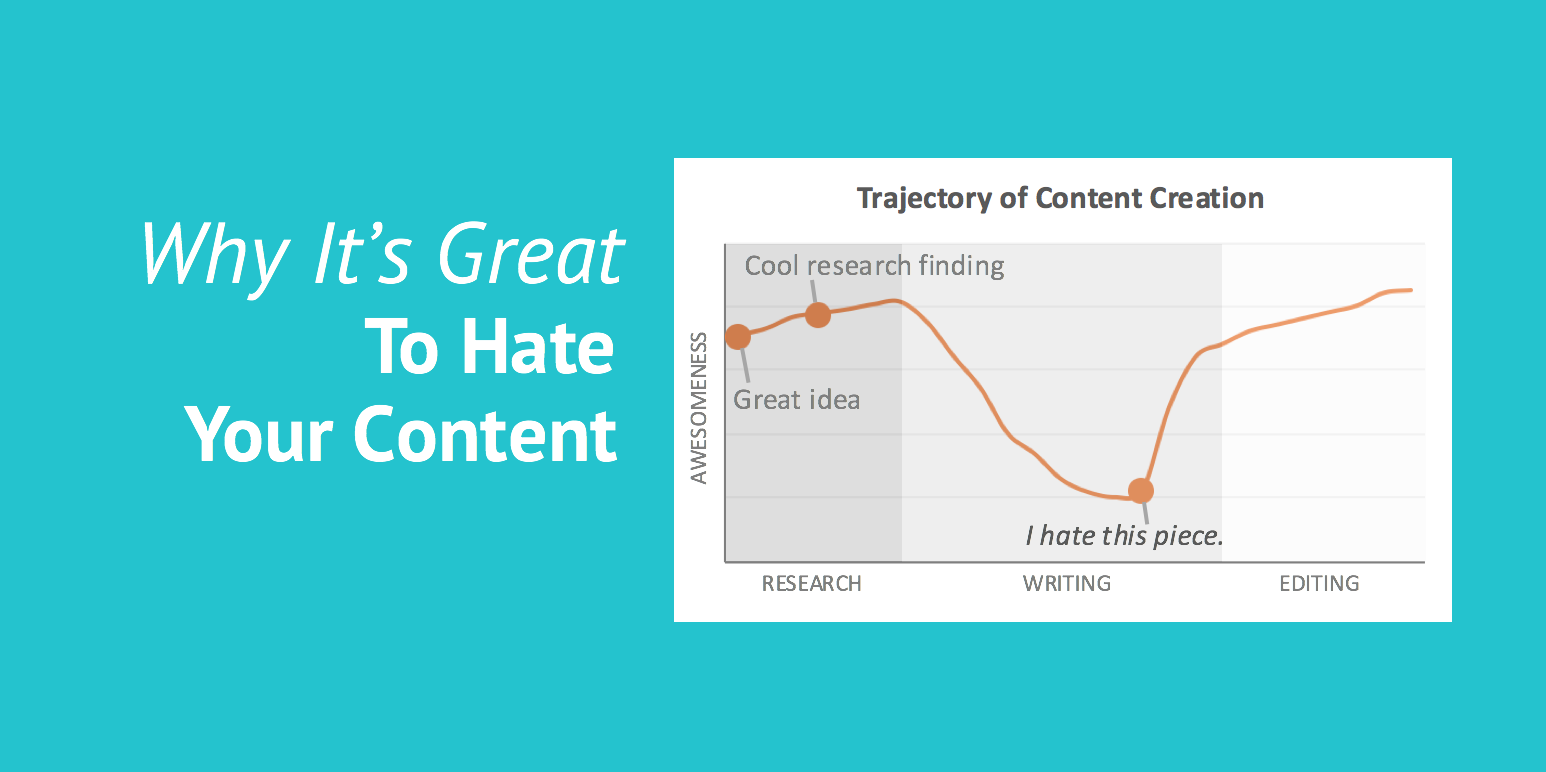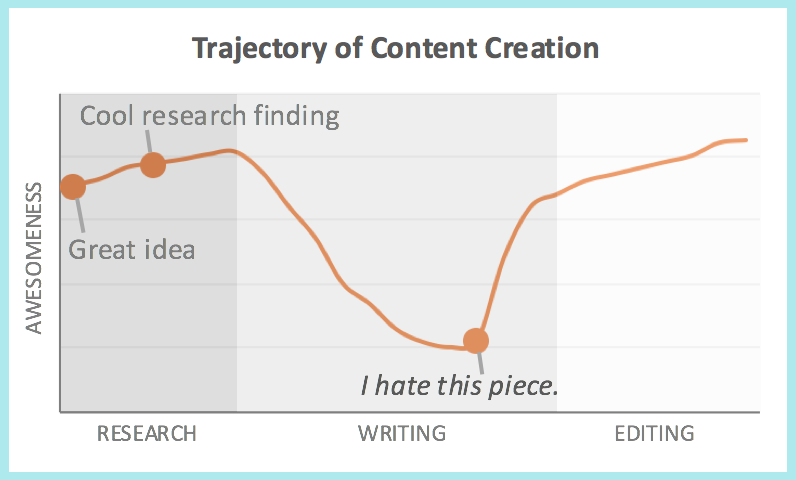Why, why, why: the question that leads to better content. Hate what you’re working on? Great news, you’re at the point where it really gets good.
To get the Compound Return newsletter in your inbox every month, subscribe here.

I write just about every day. And at some point, in any paragraph or piece, I hate what I’m writing.
I’ve learned to love this point in the process. It’s usually somewhere after the halfway mark, when I’ve researched the topic, conducted the interviews, structured the piece and started to shape it. Somewhere in the middle of the writing, or maybe toward the end, I nearly always think: I hate this piece.
It’s surely the low point of writing. A lot of effort has gone into the process, and the current state is a piece of $*%#.
But it’s also the high point.
It’s the high point, because it’s a gut-check kind of signal that I wouldn’t want to read whatever it is I’m writing. It isn’t flowing quite right, so I don’t feel proud of it. If I were the reader, I wouldn’t like it.
This is the part where I ask the most important question: why?
Something about the topic was interesting, which is what kicked off the project in the first place.
Something in the research was interesting, so it kept moving forward.
So where, how – and most importantly, why – is it going wrong?
The question of WHY is always what brings out some new insight. In fact, there’s a practice popular in manufacturing circles of asking five whys – starting with the failure point and working backwards.
For example: I hate this white paper. WHY? It’s boring. WHY? It sounds like every other piece on the topic. WHY? There’s no connection point for the reader’s experience. WHY? It doesn’t address their unique problem early enough. WHY? I am not totally clear on which of two or three points is their primary headache, so I’ve been writing around it.
Problem solved! I need to think more clearly through the pain point question, or talk with the client again to zero in on the best connection angle. A step back and some fresh thinking always invigorates a piece.
The WHY WHY WHY method works in so many forums, and it starts when you are stuck. Whatever is the most dull or uninspired in your project queue may also be the brightest opportunity – but only after you assault it with a bevy of whys.
Looking for a freelance financial writer to bring your content to life? Check out the services I offer, or reach out to talk about projects.
Carolyn is a freelance financial writer with 15+ years of experience in financial services. She holds an MBA from the University of Chicago Booth School of Business and is a CFA charterholder. She writes from Washington D.C.
Posted By
Carolyn
Categories
Compound Return Newsletter, Content Marketing